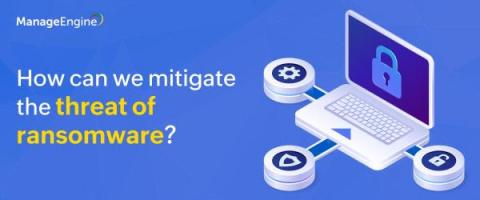Security | Threat Detection | Cyberattacks | DevSecOps | Compliance
Latest News
Risk Assessment Methodology You Should Know
DDOS Attacks: How to Protect Yourself from the Political Cyber Attack
In the past 24 hours, funding website GiveSendGo has reported that they’ve been the victim of a DDOS attack, in response to the politically charged debate about funding for vaccine skeptics. The GiveSendGo DDOS is the latest in a long line of political cyberattacks that have relied on the DDOS mechanism as a form of political activism. There were millions of these attacks in 2021 alone.
Video Blog: 5 HR/Payroll Tips to Start Fast in a New Calendar Year
Through UKG Pro, NeoSystems provides Payroll Administration and Tax Management, Compliance, Benefits Management, Open Enrollment, Recruiting, and On-Boarding as well as property, skills, and certification tracking – all through a cloud-based manager & employee self-service platform.
Defeating Ransomware
Massive ransomware attacks of 2021 and how to avoid them
2021 brought a new wave of cyberattacks that proved to be detrimental to the era of digitization. With more and more industries embracing work from home and treading into the digital world, an increase in network vulnerabilities is inevitable; however, neglecting to address these unseen vulnerabilities can make organizations targets for cybercriminals.
What are BEC scams and how to avoid them
To carry out business email compromise (BEC) fraud, a con artist impersonates an organization’s senior manager, business partner, or supplier and tries to manipulate an employee into transferring money to the wrong destination. The rogue message typically comes from a spoofed or previously hacked email address, which makes the foul play highly persuasive. Essentially, BEC is a type of phishing focused on the enterprise.
4 Ways to Combat the DevOps and Security Workforce Shortage
Most people are painfully aware that security breaches have increased in recent years, while at the same time becoming much more sophisticated in their approach. Additionally, ever-expanding application environments and continuously evolving workloads have created more opportunities than ever for attackers. What’s not so apparent to those outside of the tech bubble: The world is dangerously ill-equipped to handle the magnitude of these threats.
Using Pulumi to automate the Snyk Kubernetes integration for containers
We have all heard of the term infrastructure as code (IaC), however code in this context is not really code in the sense of a programming language. IaC usually refers to the configuration of infrastructure via tools like Terraform, CloudFormation, Kubernetes YAML, or Azure Resource Manager templates, which is really the definition of how the infrastructure will be created.
Join "The Big Fix" to secure your projects with Snyk and earn cool swag
What if there was a large, global event dedicated to finding and fixing security vulnerabilities in both open and closed-source software? An event that brings developers, DevOps, and security practitioners of all skill levels and backgrounds together to collectively make the software world more secure? Well, I’m excited to announce that Snyk has made this a reality by launching The Big Fix — a month-long event that’s running now!










